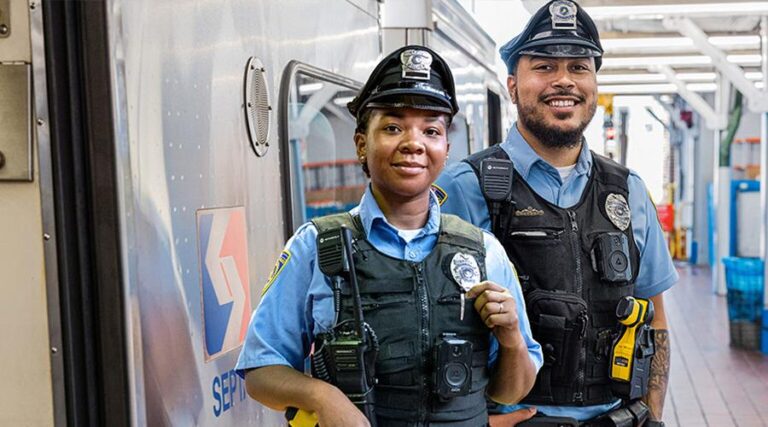Dramatic Drop in Serious Crimes on SEPTA Transit in Metro Philadelphia
The Southeastern Pennsylvania Transportation Authority (SEPTA) has achieved a remarkable 33% reduction in major criminal incidents across its Metro Philadelphia transit network. This encouraging development underscores the effectiveness of intensified safety initiatives aimed at protecting passengers and enhancing the overall security atmosphere. The latest data, unveiled by SEPTA officials, signals a positive shift amid widespread concerns about urban transit safety nationwide.
Several pivotal measures have driven this improvement, including:
- Heightened law enforcement presence in busy transit zones
- Robust community outreach programs fostering collaboration between riders and transit authorities
- Advanced surveillance technologies enabling real-time monitoring and rapid response
| Crime Category | Incidents in 2023 | Incidents in 2024 | Percentage Change |
|---|---|---|---|
| Assault | 120 | 75 | -37.5% |
| Theft | 450 | 310 | -31.1% |
| Robbery | 80 | 55 | -31.3% |
Underlying Factors Behind the Decline in Transit Crime
The substantial drop in serious offenses within SEPTA’s transit system can be attributed to a multifaceted approach combining increased policing, community involvement, and technological innovation. Transit police have intensified their presence, strategically patrolling high-risk areas to deter criminal behavior effectively. This visible enforcement is complemented by outreach efforts that encourage riders to actively participate in safety initiatives, fostering a culture of vigilance and cooperation.
Technological enhancements have been instrumental in this progress. The deployment of high-resolution cameras and centralized monitoring centers allows for swift detection and intervention in suspicious activities. Additionally, SEPTA has invested in upgrading station infrastructure by improving lighting and redesigning spaces to eliminate hidden corners, thereby reducing opportunities for crime. The table below summarizes these key interventions and their impacts:
| Initiative | Description | Effect |
|---|---|---|
| Expanded Patrols | Increased officer presence at transit hubs | Stronger deterrence and quicker incident handling |
| Surveillance Technology | Installation of HD cameras and real-time monitoring | Improved detection and evidence gathering |
| Community Engagement | Programs encouraging rider participation | Enhanced reporting and public awareness |
| Environmental Enhancements | Better lighting and open sightlines in stations | Reduced crime-prone areas |
The Critical Role of Policing and Community Collaboration
The partnership between SEPTA’s transit police and the community has been a cornerstone of the crime reduction success. Officers have adopted proactive strategies, utilizing AI-driven surveillance and data analytics to anticipate and prevent criminal acts before they occur. This forward-thinking approach has not only improved response times but also fostered a safer environment for daily commuters.
Equally important are the community-focused initiatives designed to build trust and encourage open dialogue between riders and law enforcement. Safety workshops, neighborhood meetings, and rider feedback sessions have empowered passengers to report suspicious behavior confidently and contribute to a collective safety effort. Key elements of this collaborative framework include:
- Visible officer presence during both peak and off-peak hours
- Community forums addressing rider concerns and suggestions
- Educational campaigns promoting awareness of safety protocols and emergency procedures
Maintaining and Building on Transit Safety Gains
To sustain the downward trend in serious crimes, ongoing collaboration between transit authorities, law enforcement, and the community remains essential. Continuous engagement through safety education and outreach programs keeps passengers informed and involved in preserving a secure transit environment. Furthermore, leveraging cutting-edge surveillance tools—such as AI-enhanced cameras and predictive analytics—enables rapid identification and mitigation of emerging threats.
Operational strategies that support these efforts include:
- Randomized patrols by uniformed officers in vulnerable locations to maintain unpredictability
- Upgraded lighting and station design to eliminate secluded spots and improve visibility
- Anonymous reporting channels like tip lines and mobile apps, empowering riders to discreetly report concerns
| Approach | Benefit |
|---|---|
| Community Patrol Initiatives | Enhances local vigilance and rider involvement |
| Advanced Surveillance Systems | Enables quicker threat detection and response |
| Anonymous Reporting Tools | Increases rider participation in safety efforts |
| Environmental Design Improvements | Minimizes opportunities for criminal activity |
Conclusion: A Safer Future for Metro Philadelphia Transit
The 33% reduction in serious crimes within SEPTA’s transit system represents a significant milestone in enhancing public safety across Metro Philadelphia. While challenges persist, this positive trajectory demonstrates the impact of coordinated efforts between transit authorities, law enforcement, and the community. Continued vigilance, innovative technology adoption, and active rider participation will be vital to preserving and advancing these safety gains, ensuring a secure and welcoming transit experience for all passengers.








